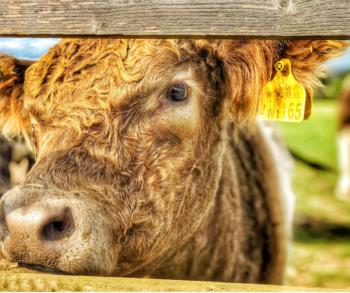New microbes discovered in cows, a salt mine and a lab mouse
Posted on July 9, 2019 by Laura Cox
Each month, the Microbiology Society publishes the International Journal of Systematic and Evolutionary Microbiology (IJSEM), which details newly discovered species of bacteria, fungi and protists. Here are some of the new species that have been discovered and the places they’ve been found.
Archaea, or ‘the ancient ones,’ are some of the oldest known organisms on our planet, with fossils dating back to 3.5 billion years ago. Since archaea have been on this planet for so long, one would assume that we would know everything about them. Yet, the archaea were only classified in 1977 and new archaea are still being discovered to this day. This month, a light pink archaeon named Halomicrococcis hydroptolerans was discovered in an underground salt deposit in China. H. hydroptolerans is, like many archaea, an extremophile and thrives in highly salty concentrations.
Two new species of yeast have been discovered in a tropical rainforest in China. These new yeasts were discovered during a study of the yeast communities present in rotting wood. The yeasts were named Candida yunnanensis and Candida parablackwelliae. In a much drier ecosystem - the Karakum Desert in Turkmenistan – a new species of bacteria was isolated from soil. The new species, which forms brown colonies when grown in the lab, was named Kribella turkmenica.

Researchers have discovered a new species of bacteria in the gut of an insect. The new species, which was named Weissella cryptoverci, was found in the gut of a brown-hooded cockroach collected from a mountainous area in the Republic of Korea.
Arsenic is a metallic grey element often used in pesticides and as a wood preservative. Some bacteria are capable of using arsenic as an energy source, although high levels of arsenic are toxic. In China, researchers have identified a new species of bacteria in the soil of a field which was contaminated with arsenic. This yellow bacterium is capable of growing in acidic conditions and was named Chitinophaga lutea.

Three new microbes have been found in cows this month. Researchers in the Netherlands found the rod-shaped Propinibacterium ruminigbrarum in the fore-stomach, or rumen, of a cow. Bacteria in the Propinibacterium genus are fermenters, and this bacterium could play a role in helping cows to digest high-fibre foods such as grass. Meanwhile in China, another new species of bacteria was found in cow dung. This new, light yellow bacterium was named Microbacterium bovistercoris.
Bovine mastitis is an infection of the udder and is one of the costliest diseases to the dairy industry. Milk from a cow with mastitis cannot be used and the condition has severe welfare implications. Researchers from the UK have discovered a new species of Staphylococcus in an infected cow’s udder. This new species was named Staphylococcus pseudoxylosus and was collected from a cow in France.
During routine monitoring of laboratory mice in a university in Düsseldorf, researchers were surprised to discover a new species of bacteria. The new microbe, which was named Leucobacter muris, was collected from the nose of a mouse during a microbiological assessment. There are currently 21 species in the genus Leucobacter – the majority of which were collected from environmental sources, like soil and water – and L. muris is the first to have been found on a mammal.

